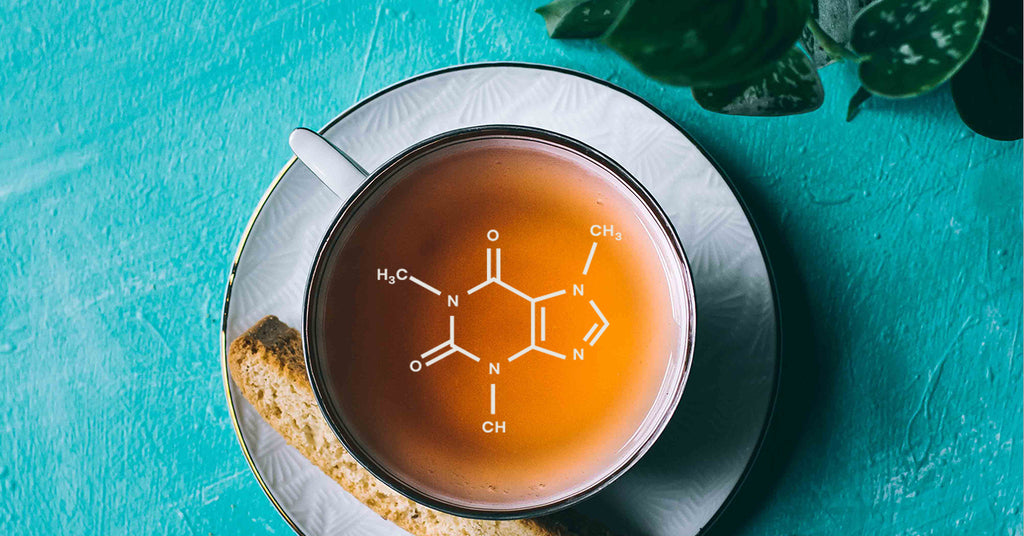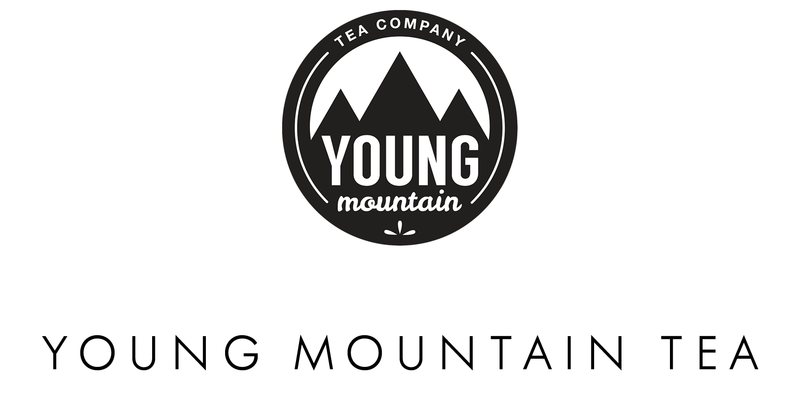Is Tea High In Caffeine?

“How much caffeine is in my tea?” and “How does coffee vs. tea caffeine compare?” are two questions we’ve been asked many times. As avid tea (and amateur coffee) drinkers ourselves, these are questions we’ve wondered about as well. The internet is filled with unsatisfying and contradictory answers, so I dug deep into our library of trustworthy tea books to piece it all together.
The punchline? There’s no clear answer. Black tea doesn't necessarily have more caffeine than green tea or white tea, and the exact same black tea steeped by different people could have varying levels of caffeine molecules within. While reality isn’t black and white (or green or oolong), it’s clear there are some common factors that affect how much caffeine is in your cup. This is our attempt to offer you the full picture, based on what we’ve gleaned from well-reviewed sources. And if you’re curious, all our sources are listed at the end.
3 Biggest Factors Impacting Tea Caffeine Levels
The three things that most dramatically impact how much caffeine ends up in your cup are:
- What part of the tea plant is plucked?
- What time of year is the tea harvested?
- How is the tea steeped?
Interestingly, processing the leaf doesn’t have much of an impact. This means if a tea farmer were to take their harvest and make black tea with half and green tea with the other half, then prepare both teas following a uniform steeping process, the two cups would have nearly identical levels of caffeine.
It’s also important to note that each person’s metabolism is unique, so the amount of caffeine that’s actually absorbed into your bloodstream might be different from your friend drinking the exact same tea.
Why Does Tea Have Caffeine?
Why does caffeine, officially known as a 1,3,7-trimethylxanthine, exist at all? This marvelous little alkaloid, the world’s most popular psychoactive substance, is found in about 60 plants around the globe: most notably tea, coffee, cacao, and yerba mate. The tea plant’s chloroplasts produce caffeine to protect its new growth from potential insect attacks. While caffeine delivers a mind-numbing electric jolt to a bug, its effects on the human system are pleasantly stimulating. For that reason, it's safe to say that without caffeine, the tea plant likely wouldn’t have achieved global domination! (Let’s not forget that tea is the world’s most consumed beverage after water.)
Harvest Timing & Techniques Impact Tea Caffeine Amounts
As a result of its botanical function, caffeine is most concentrated in the most vulnerable part of the plant—the top leaves and the terminal bud. As a result, tea crafted with just the top two leaves and a bud, the hallmark of all quality tea, will have more caffeine than the lower-grade teas made using parts further down the plant. This type of plucking standard, referred to as a “fine pluck,” ensures that the compounds that give tea its flavor—caffeine, polyphenols, and more—are tightly concentrated so there's no tasteless filler.
The tea plant also pumps out more caffeine during the windows when it is most susceptible to attack, namely right after its winter dormancy. As a result, spring teas will generally have more caffeine compared to summer or autumnal flushes.
Taking these two factors into account, high-end spring teas like the sought after Darjeeling First Flush are likely to pack the most punch. Perhaps that’s one of the reasons they’re so prized! Also, since many of the best white and green teas are made in the spring, we begin to see why making claims about what tea has the most caffeine is a complicated scenario.
What Doesn’t Impact Tea Caffeine Content? (Myth Busted!)
This is probably the most surprising (and dare I say controversial?) part of the equation. Many people will tell you that the longer the tea leaf oxidizes, the more bioavailable the caffeine becomes. If true, this would mean black tea—the most oxidized style—has the most caffeine, followed by oolongs, greens, then whites.
Unfortunately, oxidizing actually seems to lower caffeine content. In fact, when scientists at Teacraft performed an analysis, they found that the length of oxidation actually decreased the amount of caffeine:
 Further reinforcing this research, the longer the tea leaf oxidizes, the more large polyphenols are produced, which bind up caffeine and make it unavailable for human absorption.
Further reinforcing this research, the longer the tea leaf oxidizes, the more large polyphenols are produced, which bind up caffeine and make it unavailable for human absorption.
This means that black tea doesn't have more caffeine than green tea, white tea, or any other type per se.
If you’re interested in more, the team at Camellia Sinensis Tea House in Montreal keeps this running list of the teas tested using liquid chromatography, which shows a number of green teas ahead of blacks.
How Can You Change Your Tea Caffeine Levels?
Caffeine is a water-soluble compound that’s released slowly as the tea leaf steeps. The hotter the water temperature and the longer the leaf infuses, the more caffeine gets extracted.
The leaf lets go of caffeine fairly slowly as it steeps. The rate of release peaks around two-and-a-half to three minutes, slows around eight minutes, and continues to around 10 minutes. Many believe a quick rinse-steep empties the tea of its caffeine, however, our survey of science shows this is simply not true. Tea’s caffeine release is a gradual process that can be reduced by shorter, cooler steeps. But even with that approach, there will likely always be some caffeine remaining.
Black teas are typically made with water just off boil, around 210° F. In comparison, greens and whites are usually made with much cooler water (165-180° F). Also, blacks are steeped for four to five minutes, much longer than the two- to three-minute steeps of greens and whites.
It’s the hotter water and longer steep that lends black teas more caffeine than green or white, not what’s in the leaf.
Tea By Caffeine Content & Tea Vs. Coffee Caffeine
If you really want to know exactly how much is in your cup, you’d need to get each lot of tea tested using the exact method you intend to use.
That said, there are rough estimates for each tea type. These common ranges assume an 8-oz. cup of tea made with standard steepings relevant to the tea type. And, for reference, an 8-oz. cup of drip coffee usually contains 85-100 mg/cup:
- Black Tea: typically 30-40 mg/cup, sometimes up to 65 mg/cup
- Green Tea: typically 10-40 mg/cup, sometimes up to 50
- Oolongs: typically 18-20 mg/cup, sometimes up to 40
- White tea: The most variable! Anywhere from 5-65 mg/cup
- Coffee: Typically 85-100 mg/cup
- Matcha: typically 70-120 mg/cup
Why does matcha have so much caffeine compared to everything else (including coffee)? Because you literally consume the ground leaf, rather than drink the infusion of its water-soluble compounds. And pound-for-pound, tea carries more caffeine than coffee, but the amount of tea used to make a cup of tea is so much less: 2-3 grams of tea leaf versus 7-8 grams of ground coffee per cup.
Tea Vs. Coffee Caffeine Chart
You’ll notice that the ranges in this tea vs. coffee caffeine chart vary quite a bit (except for oolongs), and that there’s lots of overlap. However, 30-40 mg/cup is a reasonable amount to expect for blacks, greens, and whites.
If you’re looking for tea vs. coffee caffeine chart, it’s safe to assume there’s going to be around one-third to one-half as much caffeine in tea as there is in coffee.
Regardless of the definitive answer, one thing’s for certain … the leaves of the Camellia sinensis plant all contain caffeine. The rest is in the details!
Interested In Reading More About Tea?
DISCOVER OUR 10 FAVORITE TEA BOOKS
You might also enjoy:
Sources
Tea: History, Terroirs, Varieties by The Camellia Sinensis Tea House
Liquid Jade: The Story of Tea from East to West by Beatrice Hohenegger
The Harney & Sons Guide to Tea by Michael Harney
The Story of Tea: A Cultural History and Drinking Guide by Mary Lou Heiss and Robert J Heiss
Tea Biochemistry 101 by Teacraft Ltd., lecture and slides prepared for the 2019 India Tea Tour
Blog Author:

Raj Vable, Founder
He has been confounded by the leaf since his first transcendental encounter with white tea in 2010. Three years later, he started Young Mountain Tea to bridge his budding tea obsession with his interest in traveling in the mountains and previous experience creating job opportunities in rural India. He revels in working across cultures and can be regularly found trying to get the rest of the team on board with another outlandish tea project. His favorite teas remain white, and he’s always searching for the next cup of magic.







Comments on this post (3)
The clearest & most informative discussion I’ve seen—and I’ve read a lot about tea! Thank you!
— Laura Haigwood
Very informative. I am super sensitive in a negative way to caffeine so do not steep it very long. Just a taste! Almost impossible to give up entirely. I want to try some oolong now. Thank you, Raj.
— Jackie Manchedter
I had been on a confusing search, trying to understand coffee vs black/green/white teas for several years, when I just happened to sit down at a table with Raj at a wedding a couple of years ago. He talked, I questioned, he talked more and graciously gave me a gift of what I believe was Kumaon white. Periodically I would text him with more questions and he would respond, always within 24 hours. This latest essay on caffein is an example of the wealth of information that has been so helpful to me from Raj and the crew at Young Mountain Tea. Well done!
— Tim Draper